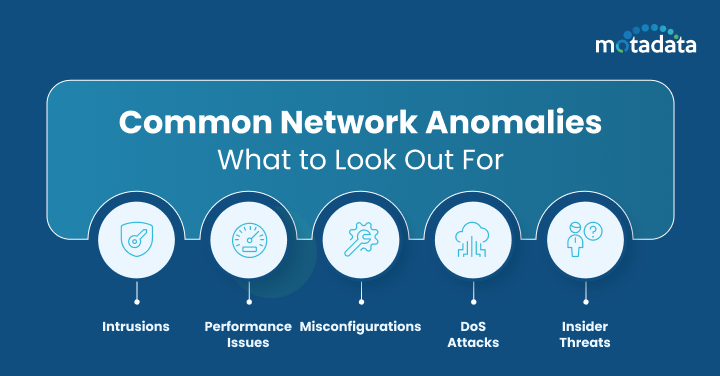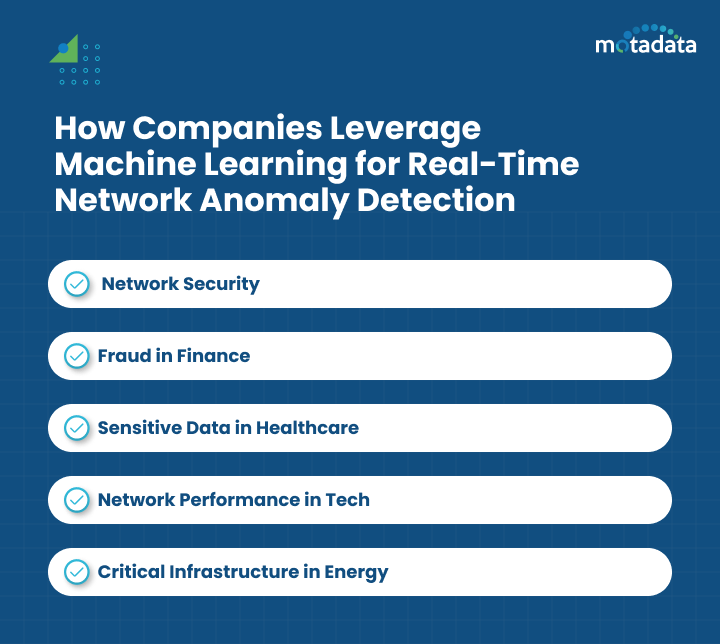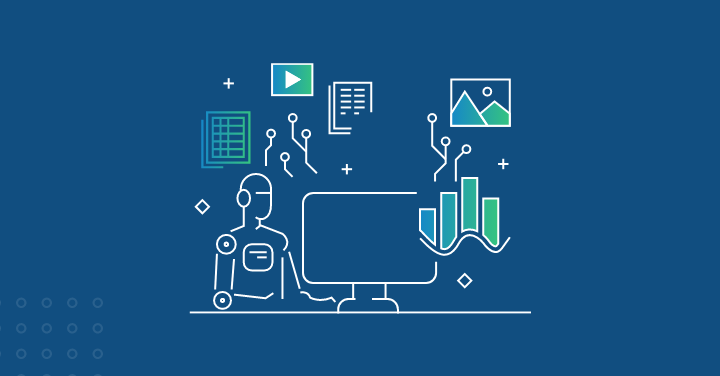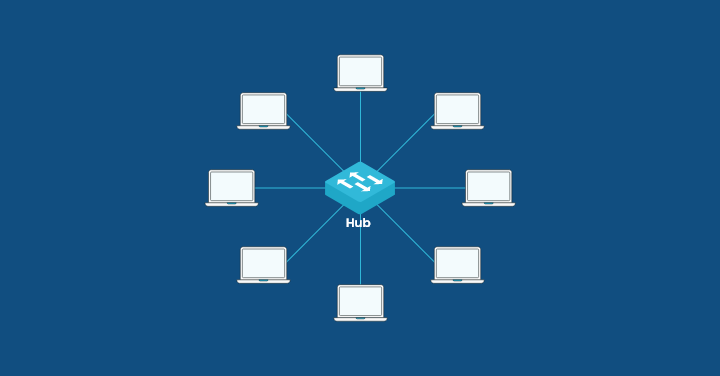Imagine your business can lose it all if it grinds to a halt once the network crashes. Emails stop, orders freeze, and customers are left hanging. When that downtime hits, it brings a lot of problems. It compromises the data, damages trust, and opens the door to security risks.
In an information-driven world, reliable network monitoring is essential. Machine learning effectively detects anomalies by analyzing data, spotting patterns, and flagging issues early. It keeps everything running smoothly and helps prevent more significant problems.
Today, you’ll learn how machine learning provides businesses valuable insights into monitoring network performance and avoiding costly disruptions.
Network Data: What You Need to Know
Networks are behind everything we do online. Browsing, streaming, or working are all about that. Simply put, networks pass data between devices, computers, and servers, making communication possible. They keep everything running smoothly online, making sure we stay connected and can exchange data.
Network traffic moves fast, often in gigabytes per second. This means tons of data are constantly flowing. This can get overwhelming quickly. It also has high dimensionality. Each connection has loads of data points. It’s like packets of information coming from different places.
Another critical point is that network traffic isn’t static. It has temporal dependencies, meaning patterns change over time. Think of it like the ebb and flow of traffic on a road: What happens now affects what happens next.
Lastly, network traffic isn’t stationary. It keeps changing. As networks adjust to new conditions, new patterns appear while old ones are fads.
All of this makes network monitoring a challenge. But understanding these characteristics is key to keeping everything running smoothly and securely.
Common Network Anomalies: What to Look Out For
Anomalies come in all shapes and sizes. And they are different for each business. At its core, anomaly detection is about figuring out what “normal” looks like for your operations. It involves tracking patterns and metrics tied to your goals and spotting anything that doesn’t fit.
Take a spike in website traffic, for instance. It could mean a cybersecurity threat and trigger fraud detection alerts. Or, it shows that your latest marketing campaign is a hit.
Not all anomalies are destructive. However, spotting them and having the data to understand their context is crucial. This will help you protect your business while understanding what’s happening behind the scenes.
- Intrusions: Unauthorized access or malicious actions, like hacking or malware.
- Performance issues: Things like sudden spikes in latency or packet loss that slow down services.
- Misconfigurations: Simple mistakes like faulty routing or wrong settings cause network hiccups.
- DoS attacks: Flooding the network with too much traffic causes it to crash.
- Insider threats: Problems caused by people inside the organization.
If certain anomalies go undetected, the consequences can be enormous. Downtime, where systems are unavailable, or, worse, data breaches, exposing sensitive information, can lead to financial losses that add up quickly.
The Struggles of Traditional Network Monitoring
Traditional network monitoring has a few big problems. Let’s state it misses many features that are crucial in today’s digital world:
- Can’t scale with growing data
- Can’t provide robust security protection
- Floods teams with irrelevant alerts
- Slow response times due to manual checks
Network security is crucial today. With the rise of SDN and IoT, networks are growing faster than ever. Users want fast, uninterrupted service, but the pressure to deliver increases as networks become more complex.
Traditional methods, such as firewalls, DPI, and IDS, are still used. But they’re costly and difficult to manage. As networks evolve, so do the threats. Thus, hackers have more opportunities to break in.
Next-gen networks, like SDN, bring new risks. The control plane is separate from the data plane, so if the controller is compromised, it affects the whole network. Plus, their communication happens over a network, making it more vulnerable.
Cloud storage and IoT complicate things further. Data moves through networks before it’s stored remotely, and IoT adds millions of connected devices. Anomaly detection has to handle all this data quickly, making network security a more significant challenge.
Network traffic anomalies can signal threats, both new and rare. Protecting networks from malicious access has always been challenging. With more connected devices, attacks are getting smarter. One thing is for sure — traditional methods can’t keep up.
Machine learning, however, adapts to new patterns. It can detect intrusions in any network, instantaneously spotting even the most unusual threats.
Machine Learning: Rapid and Precise Monitoring
Machine learning (ML), a branch of AI, is excellent for spotting unusual network activity. Why? It’s capable of looking at patterns in data and learning from them. It adapts and improves as it processes more information, saving people from doing it manually.
Therefore, unlike rigid and rule-based systems, machine learning models can adjust and learn as network traffic patterns evolve. ML doesn’t just handle complexity; its main advantage is its ability to act quickly. Ultimately, it swiftly spots abnormal behavior, making it great for early detection.
For known attacks, ML learns from past data to recognize patterns. It detects outliers for new, unknown threats by identifying anything that deviates from normal behavior. Different ML models use various algorithms, and the choice of approach depends on the situation.
How ML Spots Anomalies in Networks Instantly
Machine learning (ML), a branch of AI, is a powerful way to detect unusual network activity. It studies patterns in data and adjusts based on what it learns.
How well it works depends on the features chosen and how they’re weighted. Too many features can confuse the system, so selecting the right ones is key.
There are four main types of ML:
- Supervised Learning (SL) trains the system using labeled data. It compares predictions to actual results to improve accuracy. SL can classify data or predict numbers. Good-quality data is key to accurate results.
- Unsupervised Learning (UL) works with unlabeled data to find patterns or groups. It doesn’t need labels but often requires manual checks to validate the results.
- Semi-supervised learning (SSL) combines both labeled and unlabeled data. It begins with labeled data, makes predictions for the remaining data, and improves as it learns.
- Reinforcement Learning (RL) learns from itself. The system takes action, receives feedback, and adjusts to improve its results.
These methods help ML handle complex tasks and adapt to new network challenges.
How Companies Leverage Machine Learning for Real-Time Network Anomaly Detection
Many industries have started to embrace the power of ML in real-time anomaly detection. ML catches threats early, boosts network performance, and protects sensitive data. Thanks to instant analyses, businesses can stay ahead and respond quickly. ML is the ideal solution for keeping operations smooth and secure in the modern, interconnected digital world.
1. Network Security
Businesses increasingly leverage machine learning to detect unusual events and strengthen network security measures. ML algorithms identify irregular patterns in traffic that could signal potential threats like cyberattacks or data breaches. This way, companies can swiftly intervene and mitigate the risk, stopping attacks before they escalate.
2. Fraud in Finance
In the financial sector, ML is a breakthrough for detecting fraud. It analyzes transactions as they happen, learning the usual patterns and flagging anything suspicious.
For example, the system could send an alert if there’s a large withdrawal or a transaction from abroad. This lets businesses stop fraudulent activity right away. It helps protect both the customers and the company.
3. Sensitive Data in Healthcare
Healthcare companies use machine learning to track their networks for any signs of unauthorized access to patient data. ML systems watch for unusual activities, like odd login hours or accessing multiple patient files quickly. These behaviors raise red flags, helping to protect sensitive information while staying compliant with regulations like HIPAA.
Implementing effective strategies for protecting sensitive data is vital in industries like healthcare. Integrating medical IT risk assessment processes into your workflow can help identify vulnerabilities, ensure regulation compliance, and mitigate potential threats. These assessments strengthen network security, safeguarding critical patient information.
4. Network Performance in Tech
Tech companies use ML to keep their networks running smoothly. Whether managing traffic spikes during peak hours or identifying bottlenecks that slow down performance, ML helps detect these issues immediately. This allows businesses to resolve problems quickly and improve the user experience by reducing downtime and lag.
5. Critical Infrastructure in Energy
Energy companies are using ML to safeguard critical infrastructure. ML spots signs of cyberattacks or system issues, like unauthorized access or strange behavior in power grids. It catches these problems early.
Thus, ML helps avoid disruptions, ensuring a smooth and safe energy flow. Everything can run without interruptions. This is crucial for maintaining a steady and secure energy supply.
Implementation Challenges and Future Directions
Detecting anomalies in networks with machine learning requires specific considerations. One big issue is keeping up with evolving threats. Attackers constantly find new ways to trick detection systems. Thus, to stay effective, ML models must adjust quickly and work well without constant updates, which can be challenging and time-consuming.
Another problem is making systems easy to understand. When an anomaly is flagged, security teams need to know why. Clear explanations help them spot real threats and ignore false alarms. They also make the system more reliable and ensure it meets legal rules.
Privacy is also a concern. Checking network traffic most of the time involves sensitive information. This is where things get tricky. You must balance protecting data with keeping detection accurate. Solutions that anonymize data while remaining precise are essential for trust and acceptance.
Encryption plays a key role in securing communications by keeping data confidential and protecting it from interception. Security protocols like SSL/TLS help secure sensitive information from being exposed during transmission. One important step to enable encryption is to buy SSL Certificate, which creates a secure connection and prevents attackers from tampering with network traffic. Organizations investing in anomaly detection should also prioritize securing their digital infrastructure to enhance overall cybersecurity.
But don’t worry yet. There’s a lot of exciting research happening. Explainable AI is a big one. It can show why a system detects specific issues, making it easier to use. Federated learning is another. It improves detection while keeping data private by letting systems learn without sharing raw info.
Graph neural networks are also promising. They help analyze complex network patterns for better accuracy. These ideas are paving the way for more intelligent, safer detection systems.
Conclusion
Machine learning is revolutionizing how companies spot network issues. It quickly catches problems like security risks or performance hiccups. Depending on the situation, different models, such as supervised or reinforcement learning, work best.
Overall, these tools make networks smarter and more adaptable. In the future, they could completely change how we manage them. With advanced features, they’ll tackle challenges while keeping things reliable and private, helping networks stay smooth and safe as they get bigger.








